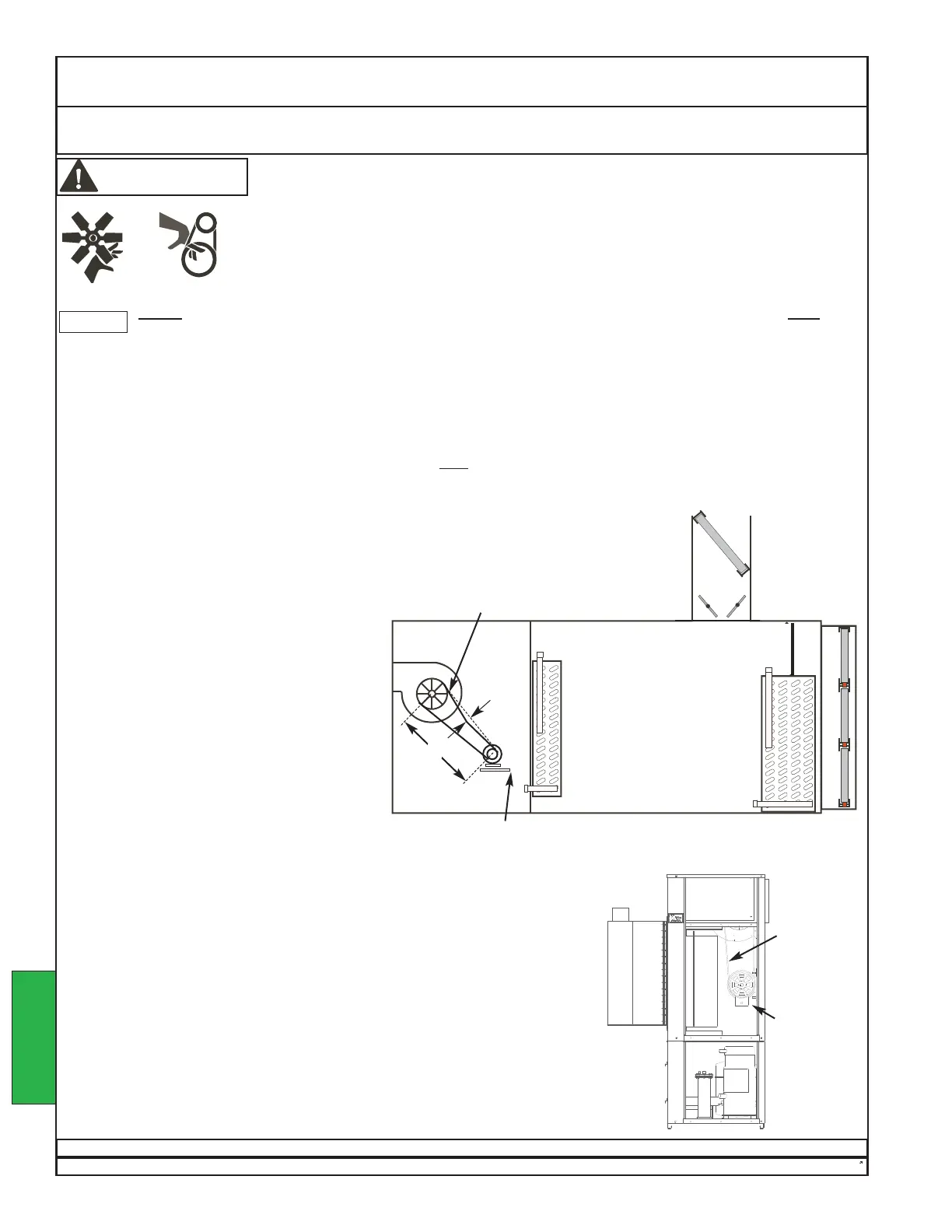Never open a sheave to remove, install, or adjust a belt - use the belt tensioning screw only.
Only a qualified air-balance technician or HVAC technician should change sheave settings.
Belts should not be frayed, glazed, or excessively worn. Follow standard belt-inspection procedures
recommended by the belt manufacturer.
To check belt tension, first disconnect electric power from the unit and follow all recommended safety
precautions. Obtain and use a V-Belt tension gauge according to the instructions provided with it. Most
major belt manufacturers provide or recommend a suitable gauge for their belts.
In an emergency, the guidelines below may help until a belt tension gauge is obtained.
DECTRON
Dectron, Inc. March 2012
DSH/DSV/RSH/DBH/RBH Series Dehumidifier Owner’s Manual
Data subject to change without notice.
256
Vertical Unit
V-belt(s)
belt
tensioning
screw
D
S
Measure the distance in inches between
the shaft centers. Multiply the number of
inches by 1/64. This will be the deflection
(D) in the diagram at right.
ex: For S=32 inches,
D = S x 1/64
D= 32in x 1/64 = 1/2 in.
Measure the diameter of the smaller
sheave.
Read the V-belt cross-section size from
the belt label or from the unit nameplate.
Adjust the belt tension to cause the force
needed to produce the deflection D to be
near that shown in the table on the next
page.
ex: For the above example of 32 inches
between shaft centers, assume that the belt
is a new B60 and that the smaller sheave is
7 inches in diameter. From the table on the
next page, a new B60 belt with a 7 inch
small sheave should require 6.3 pounds of
force to produce the 1/2 inch deflection.
Adjust the belt tension until the measured
force necessary to produce the 1/2 inch
deflection is about 6.3 pounds.
belt tensioning screw
Horizontal Unit
V-belt(s)
SAMPLE
Layout may vary.
Operation Maintenance Blower Belts
Sample
Actual layout
may vary.
Risk of contact with moving parts. Can cause injury or death.
This product contains rotating parts and V-belt drives. Some procedures could
expose personnel to the risk of injury or death from contact with these parts.
Using only approved devices (e.g. locking safety switch), disconnect, lockout, and
tagout all sources of electrical energy before working inside the unit cabinet. Allow
adequate time for rotating parts to stop. Follow all applicable safety regulations.
Do not operate the unit until ductwork or a screen is installed at each blower outlet.
WARNING
NOTICE
OPERATION
